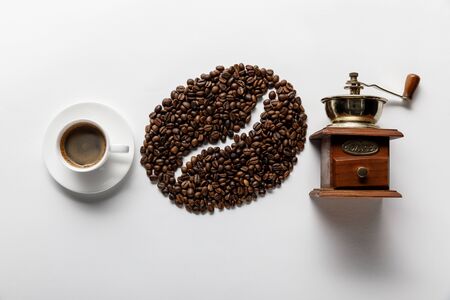1. Introduction: Coffee and the Indian Fitness Journey
In recent years, India has witnessed a remarkable transformation in its relationship with coffee—a beverage once limited to select South Indian households and elegant colonial clubs. Today, urban landscapes from Bengaluru’s Indiranagar to Mumbai’s Bandra buzz with trendy cafés, while global coffee chains jostle for space alongside local filter kaapi stalls. This burgeoning coffee culture is not just about socialising or Instagram-worthy latte art; it is increasingly intertwined with India’s growing health consciousness and weight loss aspirations. Young professionals, fitness enthusiasts, and even home-makers are exploring how their daily cup of coffee—be it a robust espresso, a smooth long black, or a creamy cappuccino—can complement their fitness routines. At the same time, traditional Indian brewing methods such as decoction-based filter coffee continue to hold sway in many homes, now finding new relevance in discussions around metabolism and calorie management. In this context, understanding which style of coffee best supports weight loss efforts has become an engaging conversation across both modern café tables and family kitchens.
2. Long Black, Espresso & Cappuccino: Know Your Cup
India’s relationship with coffee is as old as the hills of Chikmagalur, yet the modern café culture brings a global twist to our cups. To choose the best coffee for weight loss, it’s essential to understand what distinguishes a Long Black, an Espresso, and a Cappuccino—both in their international essence and Indian avatars.
| Coffee Type | Traditional Global Style | Indian Interpretation | Typical Additions |
|---|---|---|---|
| Long Black | Double espresso poured over hot water; strong but less intense than straight espresso | Served in specialty cafes; sometimes lighter roast to suit Indian taste buds; milder than filter kaapi | Rarely sugar or milk; some add jaggery for local flair |
| Espresso | Concentrated shot of pure coffee; bold and robust flavor | Found in urban cafes; shorter, sharper kick compared to South Indian filter coffee | Sugar optional; purists prefer none |
| Cappuccino | Equal parts espresso, steamed milk, and foam; creamy and rich | Adopted widely in metros; sometimes made with buffalo milk for extra creaminess | Sugar common; sometimes topped with chocolate powder or cinnamon |
The long black offers a clean, robust experience with minimal calories—a style increasingly appreciated by calorie-conscious Indians. Espresso, already close to our own ‘kaapi shots’ from the South, remains a favourite for those who like it strong and undiluted. Cappuccino, on the other hand, is beloved for its creamy texture but comes with added calories due to milk and sugar—yet it aligns well with Indian preferences for richness and fullness.
This evolution reflects our changing lifestyles: city dwellers grab an espresso shot between meetings, young professionals relax with a frothy cappuccino at cafes in Bengaluru or Mumbai, while health-focused individuals opt for a long black—sometimes spiced up with a dash of cinnamon or cardamom, echoing traditional masala chai influences. Each cup tells a story of fusion: global technique meeting Indian taste.

3. Calories, Sugar and Milk: What Really Matters?
When it comes to weight loss, the devil is in the details—especially in a country as diverse as India, where the way we enjoy coffee often involves generous servings of sugar and milk. While black coffee and espresso are naturally low in calories, the typical Indian cup rarely arrives without a spoonful of sugar or a hearty pour of full-cream milk. For instance, the beloved South Indian filter kaapi is traditionally brewed with chicory and blended with boiled milk and sugar, creating a rich, aromatic beverage that is comforting but calorie-dense. Similarly, in many North Indian households, coffee is made “beaten” style—whipped with sugar until frothy and then mixed with hot milk. This tradition mirrors our love for chai (tea), which is almost never served plain but laced with sugar and creamy buffalo milk. These regional preferences reflect deep-rooted cultural habits; however, they also mean that even an innocent cup of cappuccino or long black can quickly become a source of hidden calories. If weight loss is your goal, it’s crucial to be mindful not just of the type of coffee you choose but also of what goes into your cup. Skipping sugar or opting for toned milk can make all the difference, ensuring your daily dose of caffeine supports your fitness journey rather than derailing it.
4. The Science: Caffeine, Metabolism and Weight Loss
Coffee’s relationship with weight loss is rooted in its caffeine content—a natural stimulant found in all three popular brews: Long Black, Espresso, and Cappuccino. Scientific studies worldwide and within India show that caffeine can temporarily boost metabolism and enhance fat oxidation, offering potential support for weight management. Here’s how caffeine works on the body, especially when integrated into Indian dietary habits.
How Caffeine Impacts Metabolism
Caffeine stimulates the central nervous system, increasing alertness and energy expenditure. Research from the Indian Council of Medical Research (ICMR) indicates that moderate caffeine intake can elevate the basal metabolic rate (BMR) by 3-11%, depending on individual sensitivity and habitual consumption patterns. This metabolic boost means your body burns more calories at rest, which can be beneficial for weight loss if paired with a balanced diet.
Energy Levels and Appetite Suppression
Alongside metabolism, caffeine may also reduce perceived appetite for a short period. For many Indians accustomed to heavy breakfasts like poha or parathas, swapping sugary chai for a plain Long Black or Espresso may help curb mid-morning cravings. However, it’s important to note that adding sugar or milk—as in traditional Indian coffee or a creamy Cappuccino—can offset these benefits by increasing calorie intake.
Comparing Coffee Types: Calorie Content & Caffeine
| Coffee Type | Average Calories (per cup) | Caffeine Content (mg) |
|---|---|---|
| Long Black | ~2 | 80-120 |
| Espresso | ~2 | 60-90 |
| Cappuccino (with milk) | ~70-120 | 60-80 |
This table highlights why black coffee styles are often preferred for weight loss—they offer high caffeine with minimal calories compared to milk-based coffees. In an Indian context where daily diets already contain significant carbohydrates and fats, choosing lower-calorie beverages can make a meaningful difference.
Cultural Nuances in India’s Coffee Consumption
The effect of caffeine varies based on individual tolerance and genetics—something particularly relevant in India, where genetic diversity impacts how people metabolize caffeine. Many South Indians who enjoy strong filter coffee may develop higher tolerance, reducing the metabolic impact over time. Additionally, pairing coffee with high-calorie snacks like biscuits or samosas is common but counterproductive for weight loss goals.
In summary, scientific evidence supports caffeine’s role in boosting metabolism and supporting weight loss, provided it is consumed without excess sugar or milk—a consideration especially important within the context of Indian dietary practices.
5. Cultural Insights: Coffee Rituals from South to North
Coffee in India is not just a beverage; it is a ritual woven into the fabric of daily life, with traditions that vary dramatically from region to region. In the southern states—Tamil Nadu, Karnataka, Kerala, and Andhra Pradesh—coffee is synonymous with ‘filter kaapi’. This South Indian filter coffee, brewed using a metal filter and blended with chicory, milk, and sugar, is poured back and forth between steel tumblers to create its signature frothy texture. The ritual of sharing filter coffee at home or in bustling “darshini” cafes reflects warmth, hospitality, and a sense of community.
However, as we move towards metropolitan cities like Mumbai, Delhi, and Bangalore, a new café-driven culture is on the rise. Here, espresso-based drinks such as long black, cappuccino, and straight espresso shots are gaining popularity among young professionals and health-conscious urbanites. International chains like Starbucks and Indian brands like Café Coffee Day have democratized access to global coffee styles, offering options like skinny cappuccinos or unsweetened espressos that appeal to those seeking lower-calorie alternatives for weight management.
It’s important to note that while traditional South Indian filter coffee often contains generous amounts of milk and sugar—potentially increasing calorie intake—the urban espresso culture emphasizes customization. Consumers can opt for black coffee variants such as long black or pure espresso without added sugar or cream. Such choices align more closely with weight loss goals as they deliver caffeine’s metabolic benefits with minimal calories.
This evolving landscape illustrates how India’s coffee rituals are embracing both heritage and modernity. Whether you savor your morning cup as a nostalgic filter kaapi in Chennai or a sleek long black in Gurgaon’s coworking spaces, your choice can be tailored to support your health journey without sacrificing cultural identity.
6. Which Cup Is Best? Indian Diets and Practical Choices
When it comes to choosing between Long Black, Espresso, and Cappuccino for weight loss in India, the answer depends greatly on how these coffees fit into the diverse tapestry of Indian diets. Let us explore how each option aligns with common Indian eating habits—including vegetarian and non-vegetarian preferences, low-carb trends, and even ancient Ayurvedic principles.
Long Black: A Low-Calorie Sipper for All
The Long Black, essentially a double shot of espresso poured over hot water, is virtually calorie-free when enjoyed without sugar or milk. For Indians following vegetarian or non-vegetarian diets, this makes it an ideal beverage between meals or as a morning pick-me-up. Its lack of dairy also means it sits well with those who are lactose intolerant—a growing concern in urban India. Moreover, those practicing intermittent fasting or keeping carbs low (as seen in many modern Indian weight-loss regimens) will find Long Black an ally. Ayurveda generally approves of black coffee in moderation, especially when balanced with warm foods rather than on an empty stomach.
Espresso: Intense and Minimalist
Espresso offers the purest coffee experience—strong, small in volume, and free of unnecessary calories if consumed plain. For Indians who prefer quick, sharp energy boosts without lingering over large mugs, espresso fits well into busy routines. It also appeals to those on low-carb or keto-style diets gaining popularity in India’s metros. However, its bitterness can tempt some to add sugar—something to be mindful of for those aiming for weight loss. From an Ayurvedic lens, espressos intensity may aggravate pitta dosha if overconsumed but is generally acceptable if kept moderate and paired wisely with food.
Cappuccino: The Milky Comfort
Cappuccino—equal parts espresso, steamed milk, and foam—is beloved across Indian cafés for its creamy texture. Yet its milk content raises the calorie count significantly compared to Long Black or Espresso. For vegetarians relying on dairy for protein and nutrients, cappuccino might seem appealing; however, for those strictly managing caloric intake or following vegan/plant-based trends, this drink can quickly tip the balance away from weight-loss goals. Ayurveda traditionally prefers lighter drinks but does value milk for nourishment; thus, if one must indulge, opting for skimmed milk or plant-based alternatives can offer a compromise.
Practical Tips for Indian Context
- If you enjoy South Indian filter coffee culture but want to lose weight, consider switching to black coffee styles without jaggery or condensed milk.
- Spices like cardamom or cinnamon can be added for taste and digestive support—a nod to both traditional chai masala blends and Ayurveda.
- When ordering at local chains (CCD, Barista), always request less sugar/syrup and choose “no whipped cream” options.
The Verdict
For most Indians aiming for weight loss across varied dietary patterns, Long Black emerges as the most adaptable choice—low-calorie, versatile with spices, and easy to customize. Espresso suits those seeking strong flavor in small doses. Cappuccino, though comforting, is best saved as an occasional treat unless made with lower-calorie milk alternatives. Ultimately, mindful preparation and portion control are key—just as our grandmothers advised with every cup of chai or kapi!
7. Conclusion: Brewing the Healthier Sip in India
Choosing the best coffee for weight loss in India is not just about calories or caffeine—its about blending modern nutritional wisdom with our rich culinary traditions. While long black and espresso clearly stand out as lower-calorie options compared to cappuccino, your choice can also honour your personal taste and cultural background. For those embracing a weight loss journey, opt for plain black coffee or espresso without added sugar or heavy creamers. Consider enjoying your cup alongside classic Indian breakfasts like poha, upma, or idli for sustained energy, rather than pairing it with sugar-laden biscuits. If you crave a milkier coffee, try using toned or plant-based milks, keeping portions moderate and avoiding extra sweeteners.
Culturally, coffee breaks can be moments of mindful self-care. In South India, the ritual of brewing filter coffee is cherished; consider adapting this tradition by using less sugar and skimmed milk. If you’re new to coffee, start slow—your palate will adjust over time. Remember that Ayurveda suggests moderation and listening to your body’s needs; don’t overconsume in the hope of faster results.
Ultimately, the healthiest coffee is one that fits seamlessly into your daily rhythm, supports your health goals, and respects both global wellness trends and local traditions. With conscious choices and a touch of Indian ingenuity, your next cup can be a satisfying ally on your path to well-being.


